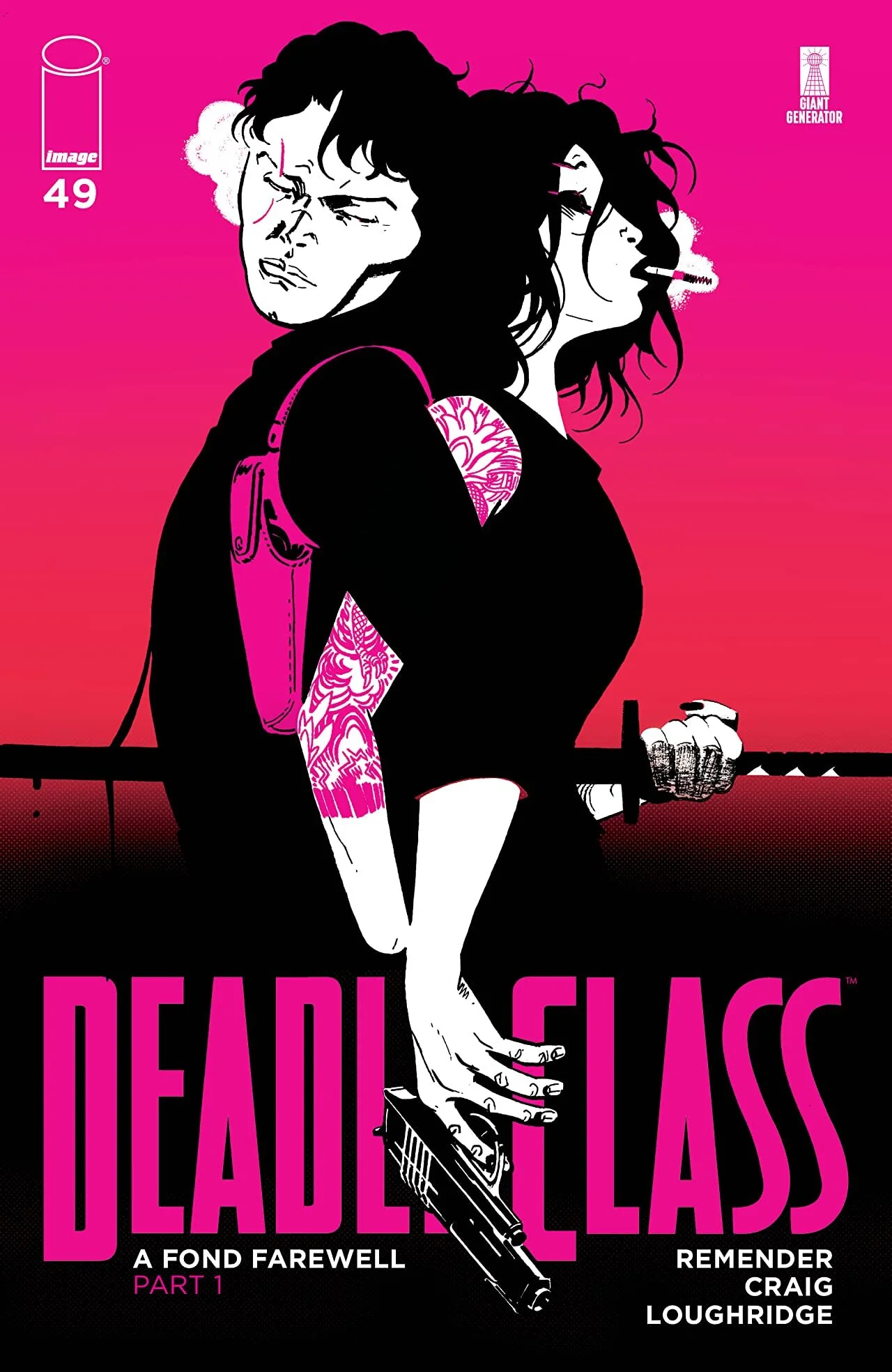Deadly Class #47
Saya's life has taken a turn for the worst in Deadly Class #47, by writer Rick Remender, artist Wes Craig, colorist Lee Loughridge, and letterer Rus Wooton. This story arc has been about catching up with the characters as adults, and this one is the saddest so far, as Saya's life is easily the worst of them all.
The gist of this issue is that Saya is the stereotypical dead inside Gen Xer. She wanders the streets of San Francisco, stealing and smoking heroin, dead inside and musing over the ruins of her life. She has vivid fantasies about her life, but it goes nowhere, and after an episode, she awakens in a strange place, where an old face is waiting.
One of the most annoying things about Deadly Class was how long it was afflicted by Marcus's nihilistic musings. He was the stereotypical angry teen, and while he had good reason, it just got tiring after a while. In this issue, Remender goes a different direction with the depressing musings, as Saya questions her life and what it's become. It's way more effective than any of the later Marcus monologues because seeing Saya like this, a broken junkie, is very different from how she was ever portrayed, and yet it makes perfect sense. Her sword hand is gone; the one thing she was good at has been taken from her. Her friends are gone, the world has moved on, and her enemies, like Brandy, are prospering. She has nothing left, so she goes for the short-term satisfaction of drugs.
It's bleak, but Deadly Class has never been a triumphant book. Addiction and drug use and the general Gen X ennui are a big part of a lot of Remender's work, but it's never judgemental. Saya's life isn't great, but she's never portrayed as pathetic. This is her choice, and it's one she knows the consequences of. The great part about this issue is that it doesn't fall back on the stereotypes- she's not the pathetic junkie seeking help and failing. She doesn't hit rock bottom. She survives and keeps going; she chooses addiction because she has no reason to choose a world that left her behind, that hurt her. While the book's ending is pretty telegraphed from the beginning, it's a great moment because it represents the hope that reconnecting with the past can bring.
Craig's art in the last few years of Deadly Class has rarely is ever reached the heights it did in the early years of the book. This issue, however, does. The pencils never get too muddy or indistinct, and Saya's heroin-powered hallucinations look great. It's one of the best issues the art team has put out in a long time.
Deadly Class #47 is depressing, but it all makes sense. Remender does a beautiful job of showing addiction without getting too stereotypical about it, but he never glorifies it. Craig and Loughridge's art is almost as good as it ever was, which is excellent. It's one of the best issues of Deadly Class in a long time.









